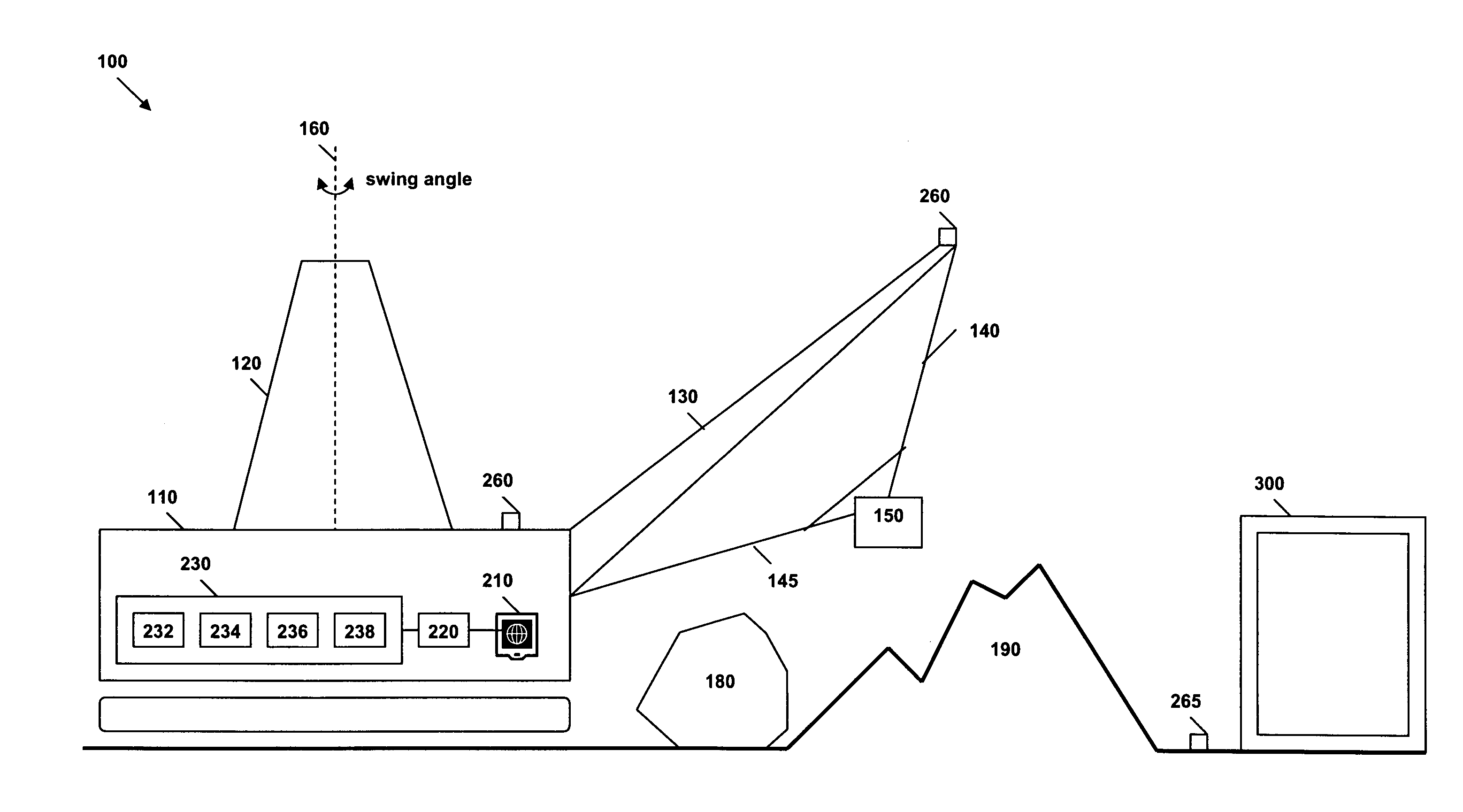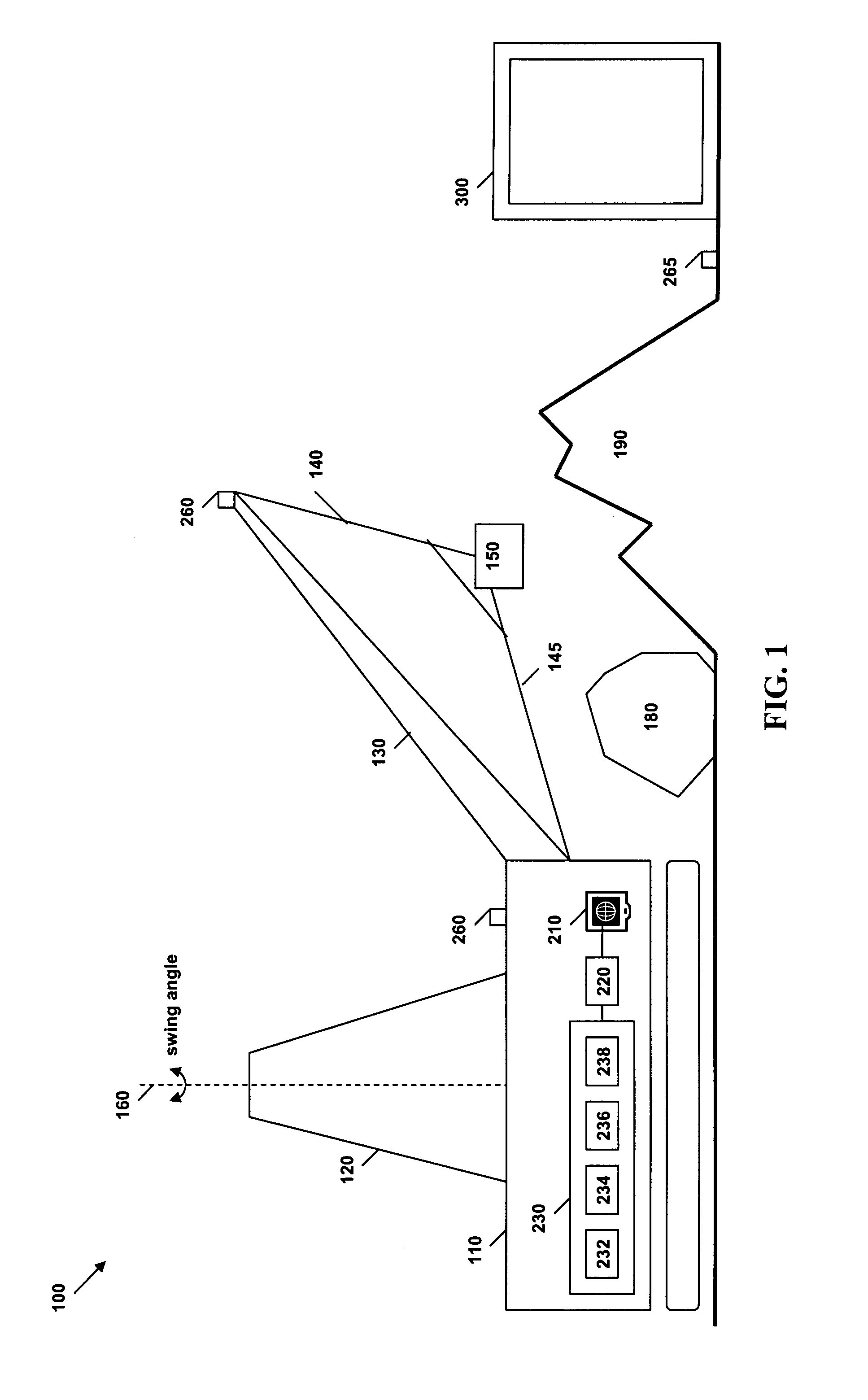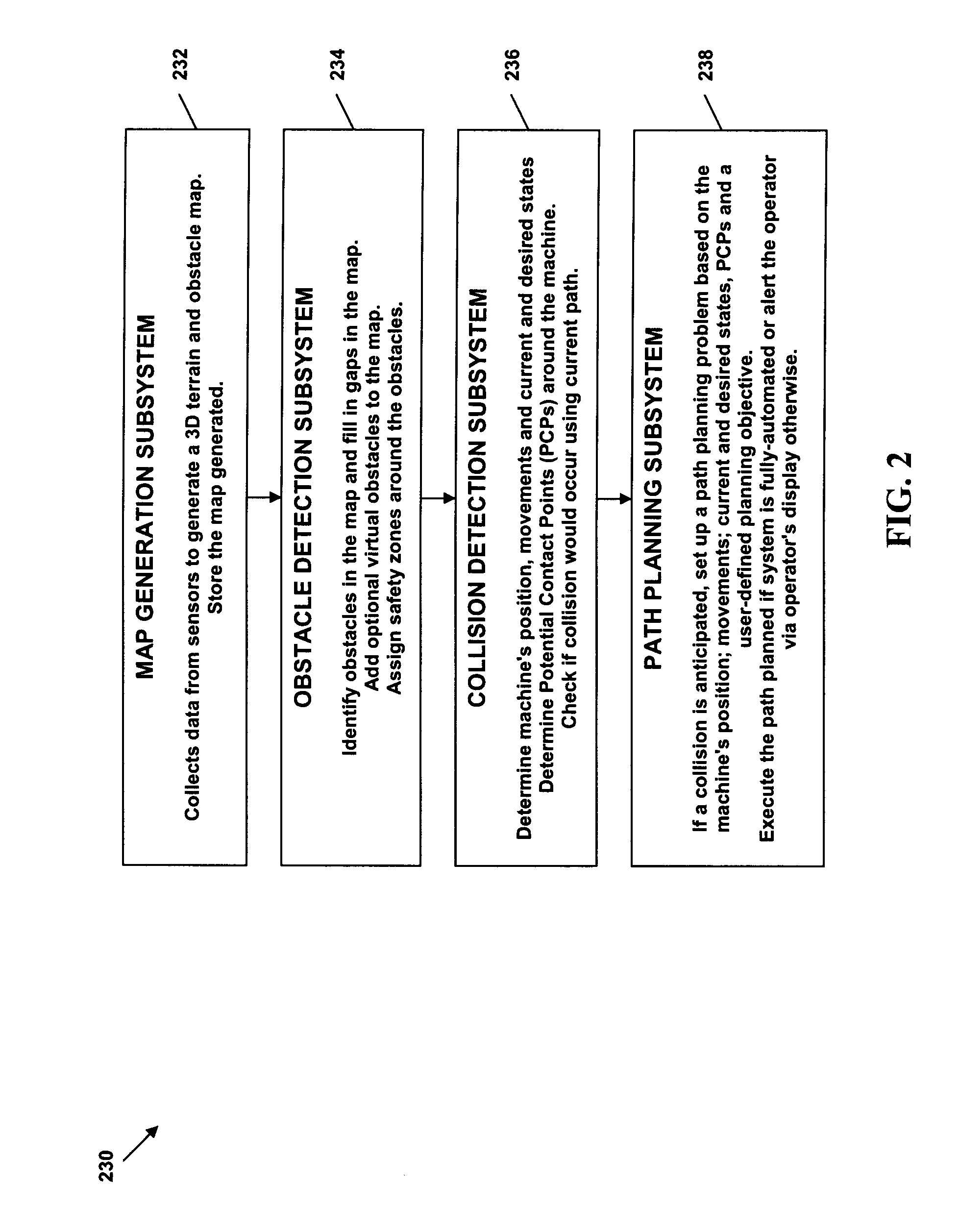Method for planning and executing obstacle-free paths for rotating excavation machinery
a technology of obstacle-free paths and excavation machinery, which is applied in the direction of vehicle position/course/altitude control, process and machine control, instruments, etc., can solve the problems of limited visibility and ‘blinding’ limitations, and affect the vision of humans in times of limited visibility, so as to mitigate the problems faced by operators
- Summary
- Abstract
- Description
- Claims
- Application Information
AI Technical Summary
Benefits of technology
Problems solved by technology
Method used
Image
Examples
Embodiment Construction
[0027]Referring first to FIG. 1, dragline 100 comprises a house 110, a mast 120, a boom 130, hoist ropes 140, drag ropes 145 and a bucket 150 suspended from the boom 130 by the hoist ropes 140. The entire dragline 100 is able to swing about its vertical axis 160. In a typical excavation cycle, the bucket 150 is first lowered to scoop material from the excavation site 190. The bucket 150 is then dragged towards the house 110 using drag ropes 145 and lifted using hoist ropes 140, filling the bucket 150. Next, the dragline 100 is swung about vertical swing axis to position the bucket 150 above the place where the material is to be dumped. The dragline 100 is typically operated using sensors and actuators under the control of code in a Programmable Logic Controller (PLC).
[0028]The swing operation typically accounts for 80% of the time of an excavation cycle. In current systems, operators rely on their knowledge of the machine's behaviour as well as visual sighting of obstacles to plan a...
PUM
 Login to View More
Login to View More Abstract
Description
Claims
Application Information
 Login to View More
Login to View More - R&D
- Intellectual Property
- Life Sciences
- Materials
- Tech Scout
- Unparalleled Data Quality
- Higher Quality Content
- 60% Fewer Hallucinations
Browse by: Latest US Patents, China's latest patents, Technical Efficacy Thesaurus, Application Domain, Technology Topic, Popular Technical Reports.
© 2025 PatSnap. All rights reserved.Legal|Privacy policy|Modern Slavery Act Transparency Statement|Sitemap|About US| Contact US: help@patsnap.com



